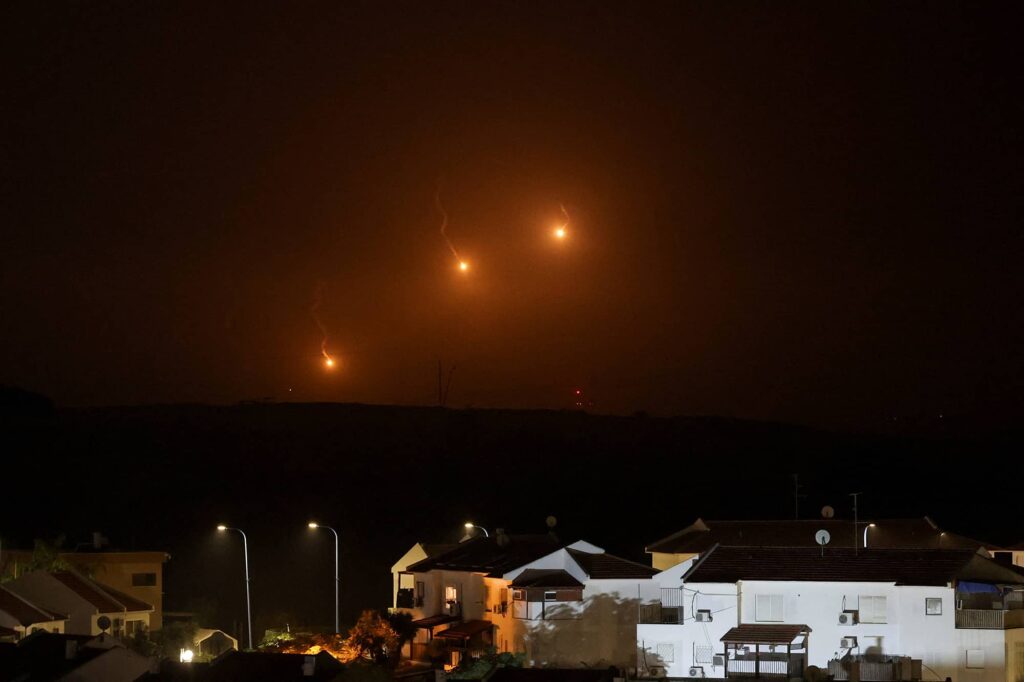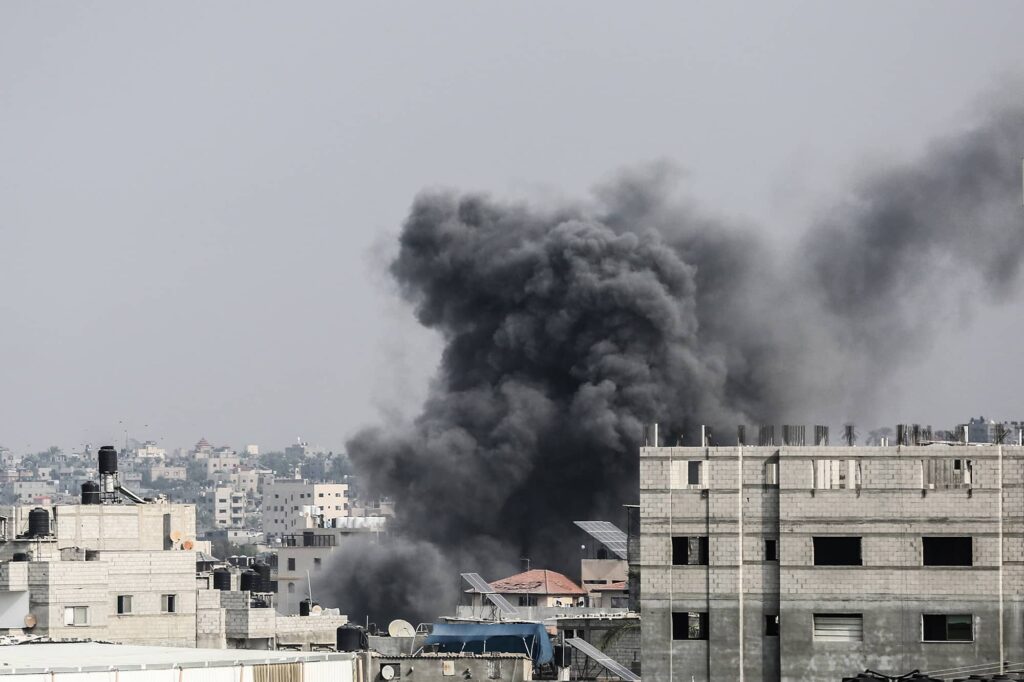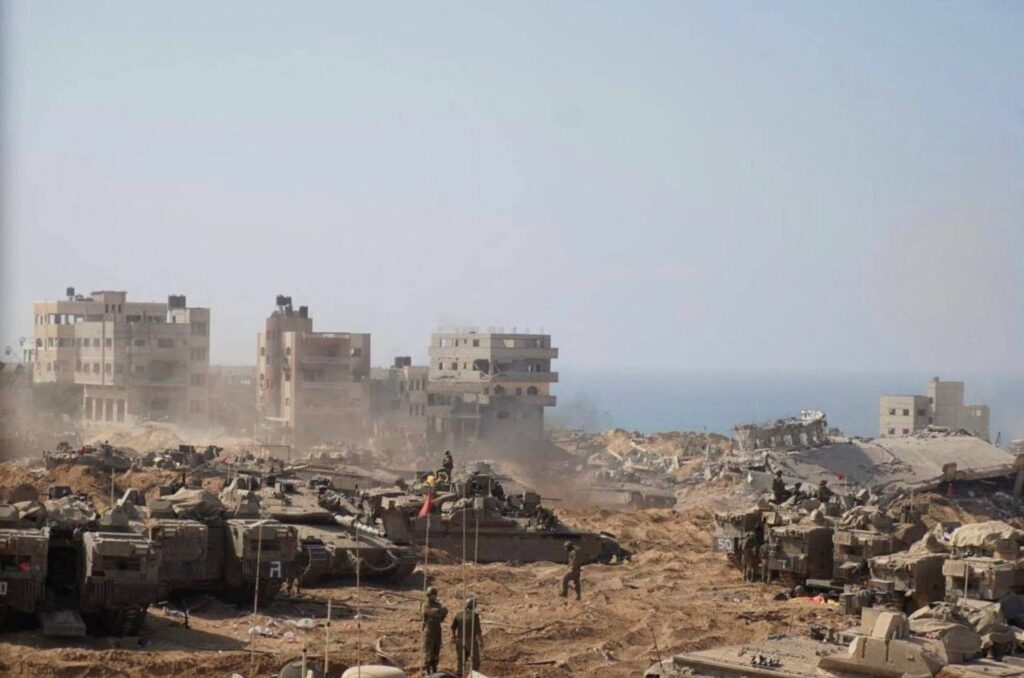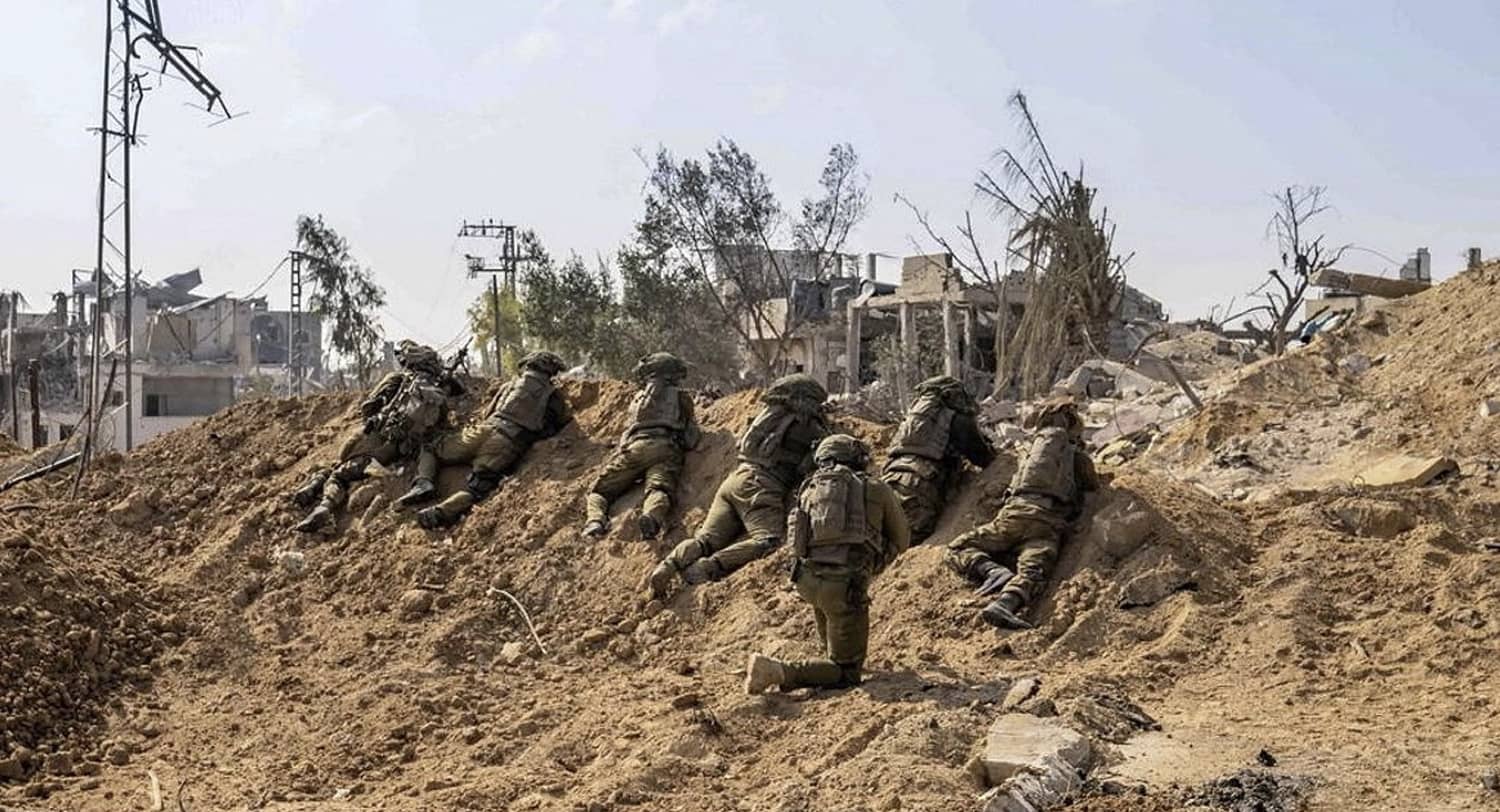The week of fighting on the ground that began on Saturday, October 27 was tough. There were Israeli military casualties and Gazan civilian casualties. The worst incident for Israel came when a Namer armored personnel carrier was hit with a missile and eleven soldiers were killed. A well-known tank commander, Salman Habaka, who had played a key role in liberating Kibbutz Be’eri during the massacre of October 7, was also killed in Gaza.
>> Reports from the Gaza Front: Read more from Seth J. Frantzman
On November 5, the IDF said that its forces had pushed through the Gaza Strip from east to west and reached the Mediterranean Sea. This means that the IDF now sits on the two key north-south roads leading from Gaza City to southern Gaza: the Rashid road on the coast and Salah al-Din in the center. The operation to get this far had taken roughly a week. This is an important symbolic phase for the IDF, since it shows that the forces could carry out a large-scale ground maneuver from multiple points, using the latest technology that the IDF has been working with over the last decade to increase the effectiveness of various firing units, from tanks to drones, planes, ships and artillery.
The war in Gaza has been going on since Hamas attacked Israel on October 7. I have spent several days a week on the Gaza border, or in northern Israel, covering the war from as close to the front as possible. Israel declared much of the area around Gaza a closed military zone after the October 7 attack. Around 100 Israeli communities were evacuated near Gaza and in the north. This includes the cities of Sderot and Kiryat Shmona.
These days when you drive into Sderot it is a ghost town, emptied of its tens of thousands of residents. New neighborhoods that were under construction are now barren. The IDF also has forces patrolling on hilltops and areas between Sderot and Gaza. Journalists are encouraged to stay back in a few places, one of which is near a now-abandoned kindergarten. On November 3, a rocket fired from Gaza struck near the kindergarten, showing there is no safe place to be.
The IDF carries out operations day and night. However, the general pattern has been for Israeli forces to move at night and also carry out increased airstrikes at night. Israel enjoys advantages at night, with optics and technology, whereas Hamas has the tunnels it has built, the urban terrain to hide in, and civilians to hide behind.

While hundreds of thousands of Gazans have fled the northern Gaza Strip, many remain. Israel has been asking them to leave for weeks, dropping more than a million pamphlets, and making recorded calls, sending text messages and even making individual calls to residents, according to data from the IDF spokesperson. However, Hamas has fired on people trying to leave for the south.
The IDF accuses Hamas of using medical facilities, such as Shifa Hospital and the Indonesian Hospital for cover. Hamas also continues to hold 240 hostages. It had released two American hostages and two elderly women in the first weeks, but that process has stalled. Israel was also able to rescue one of the hostages, Private Ori Megidish, who had been an IDF observer on October 7 when she was kidnapped by Hamas. Israel has vowed to get the hostages back. In Tel Aviv, the city is blanketed with posters and commemorations of the hostages.
Israel’s Defense Minister Yoav Gallant has called on Hamas to surrender, warning them that they can either die in their tunnels or give up. He has said Israel will eliminate Hamas leader Yahya Sinwar and says this is a war of “us or them.” For the soldiers who flocked to the front on October 7 there is a feeling of motivation akin to a new 1973 war or a new 1948 war.
The IDF began operations on the ground at night, with raids during the evenings between October 24 and October 27. These raids targeted northern and central Gaza. The landscape in these areas is rural and made of fields and dunes. IDF bulldozers and combat engineers made paths for vehicles. At a daily briefing, the IDF explained, “overnight, the IDF conducted a targeted raid using tanks in the northern Gaza Strip, as part of preparations for the next stages of combat. The activity was commanded by the Givati Brigade. During the activity, soldiers located and struck numerous terrorists, terror infrastructure and anti-tank missile launch posts, and operated to prepare the battlefield.” Israel also used its Shayetet 13 naval commandos to carry out a raid on the southern Gaza Strip.
On the 27th a larger maneuver began but it was not announced by Israel. Instead the rumors set off concerns in the region and calls for a ceasefire. Israel pushed forward. The ground operation coincided with a threat from Yemen. The Houthis have launched drones and missiles at Israel, on October 17, the 27 and again on the 31st, in an effort to distract Israel from its operations and support Iran and its proxies in the region.
On October 28, IDF Chief of Staff Herzi Halevi said; “the objectives of this war require a ground operation – the best soldiers are now operating in Gaza.” The IDF said that combat forces, including tanks, infantry and combat engineers had pushed into northern Gaza. They were confronted by Hamas small arms fire, mortars and booby-trapped structures, as well as anti-tank missiles.
Working together the Israel Air Force struck 450 targets the first days and the ground forces took out 20 Hamas terrorists in one area. “In addition, over the last few days, the IDF struck over 600 terror targets, including weapons depots, dozens of anti-tank missile launching positions, as well as hideouts and staging grounds used by the Hamas terrorist organization,” the IDF said on October 29.

The IDF has focused on eliminating Hamas mid-level commanders and more senior officers, such as battalion commanders and commanders of Hamas air defenses. At least a dozen battalion commanders were eliminated over the first month of combat.
Key commanding officers visited the units during the first week. Chief of Staff HaLevi toured several units, such as the artillery; while Major General Yaron Finkelman, commander of Southern Command, conducted a situational assessment. “No matter how long or how hard the fighting will be, there is no other outcome than victory. We will fight with professionalism and strength, based first and foremost on the IDF values which were instilled in us…We will fight in alleys, we will fight in tunnels, we will fight wherever necessary,” he said.
Meanwhile Iranian proxies sought to derail the Gaza mission. Hizbullah heated up the northern border with Lebanon, carrying out numerous rocket and missile attacks. The Houthis in Yemen also fired a ballistic missile and cruise missile at Israel, forcing Israel to use the Arrow air defense system and to scramble F-35s to stop the threats. These were both a “first” for Israel. The Arrow was developed by Israel and the US and the successful interception was a major step for the system. Israel has sold the system to Germany. Israel has purchased 75 of the F-35 advanced jets. Israeli defense companies also make wings and helmets for the plane.
As Israel inched closer to Gaza City, it also swept around the south of the city to cut it off from southern Gaza while a third prong of forces pushed south along the coast. As it pressed into Gaza, the IDF continued to take out Hamas commanders. One of them, Ibrahim Biari, was considered by the IDF to be a top leader responsible for sending “Nukhba” (means “elite” in Arabic) terrorist operatives to carry out the murderous terror attack on October 7th. He was killed in the Jabalya Refugee Camp, a densely populated area, where Hamas has tunneled under many residential areas. Strikes on the tunnels also damage nearby houses. Palestinians in Gaza say thousands have been killed; the Gaza Health Ministry said on November 6 that more than 9,000 Palestinians have been killed in Israeli airstrikes..
The 162nd Division of the IDF, along with elements of the Givati and the Golani Brigades have played key roles in the battle for Gaza. The Golani troops had suffered high casualties on October 7, so for them this was an important return to the field to regain their strength and sense of effectiveness. The stage had been set for surrounding Gaza with the air force striking 11,000 targets in the first month of the war. This helped clear the way for the 16nd to make progress along the coast and in the northern Gaza Strip. After a week of battle on the ground, the IDF said 2,500 targets had been struck. It was unclear if that number included some of the 11,000 the IDF also said had been hit in the first month of fighting.

In addition the IDF said that its 36th division had reached the coast. “The role of the division is to encircle Hamas forces in Gaza City, and to strike and destroy select targets, including significant assets and command and control centers belonging to the Hamas terrorist organization,” the IDF said. The 36th had struck 1,600 targets, the IDF noted. “The targets include the organization’s infrastructure, weapons storage facilities, anti-tank missile launch and observation posts, and Hamas operatives,” the IDF said. It had also eliminated 300 terrorists in its sector. It was not clear the overall estimate of terrorists eliminated but it would appear the first month has included several times that number in other sectors.
My experience along the border with the IDF has shown how they are moving methodically into Gaza. The IDF kept journalists out of Gaza for the first week but allowed a small number of embeds on Saturday, November 4. It is unclear if they will permit more journalists to come into the Strip.
The volume of airstrikes, artillery and tank fire has been very high since the war began. I consulted with several veterans of US operations who served in Iraq in 2004-2006 and they believed Israel’s use of a lot of munitions against Hamas was a good method, as opposed to using too small a force.
Now that Gaza City is surrounded and the IDF has control of the suburban areas, the struggle for the city may begin. The IDF could pause here, as some abroad have called for a humanitarian pause. It can also move street-by-street, as the Iraqis did to retake Mosul from ISIS. Many options remain. Israelis want the hostages to return home and Hamas to be dismantled forever. This remains a complex and difficult task for the second month of fighting.
>> Reports from the Gaza Front: Read more from Seth J. Frantzman

